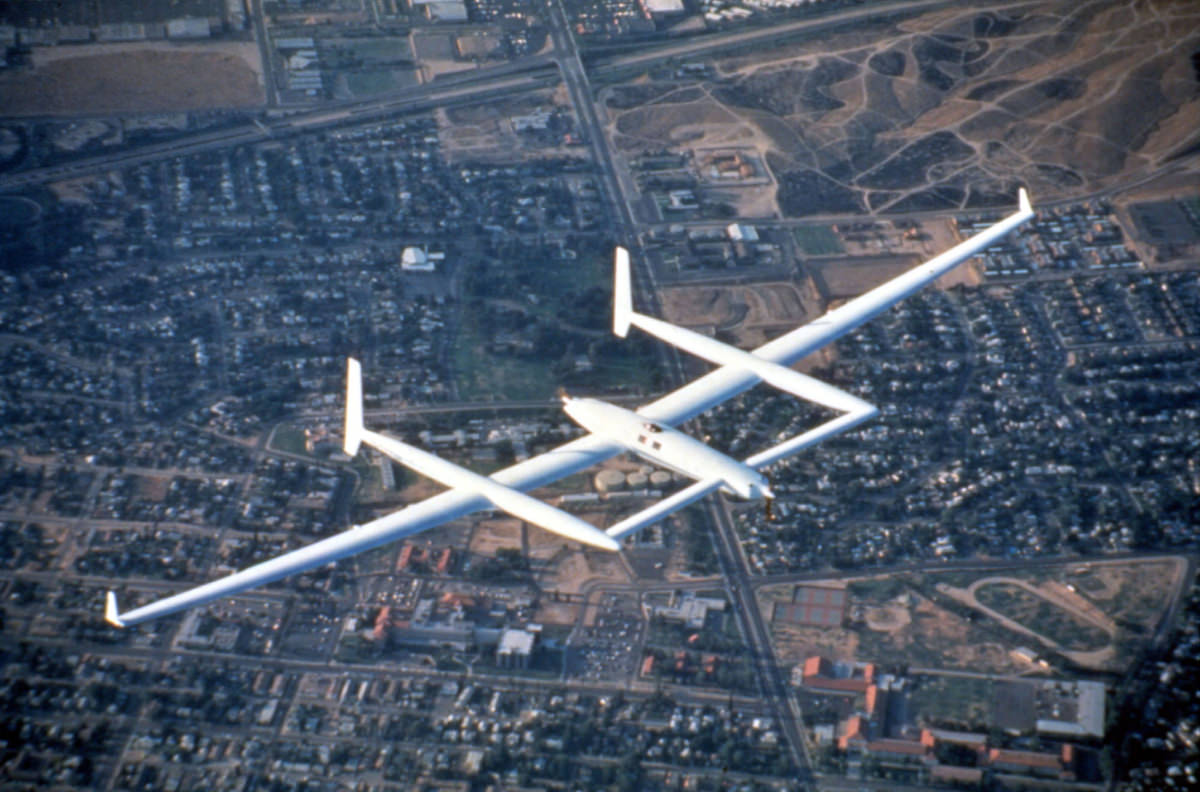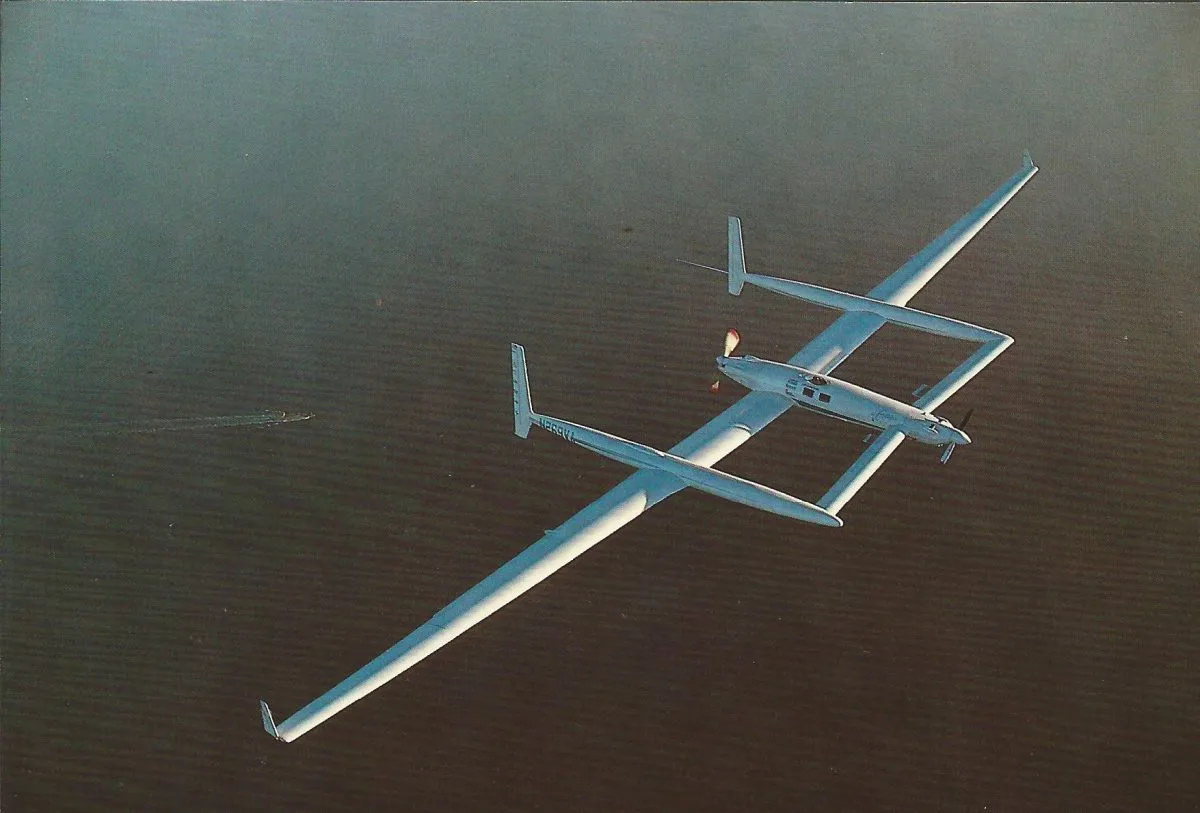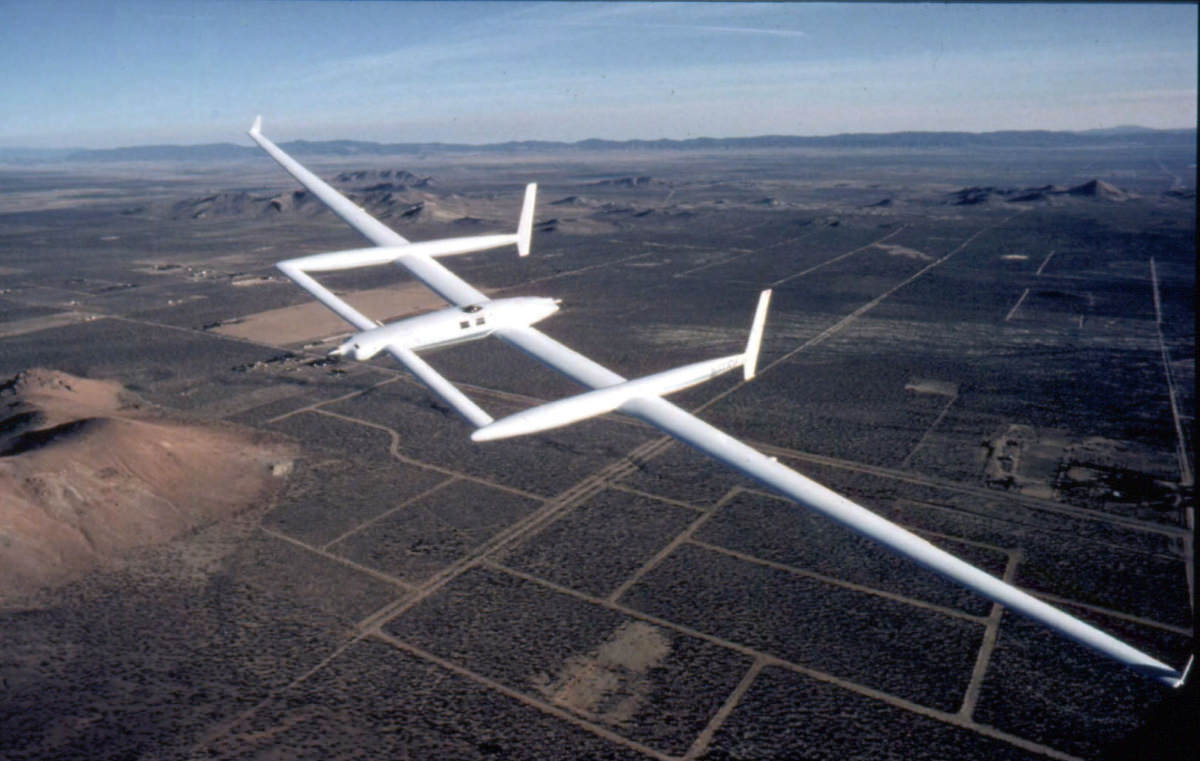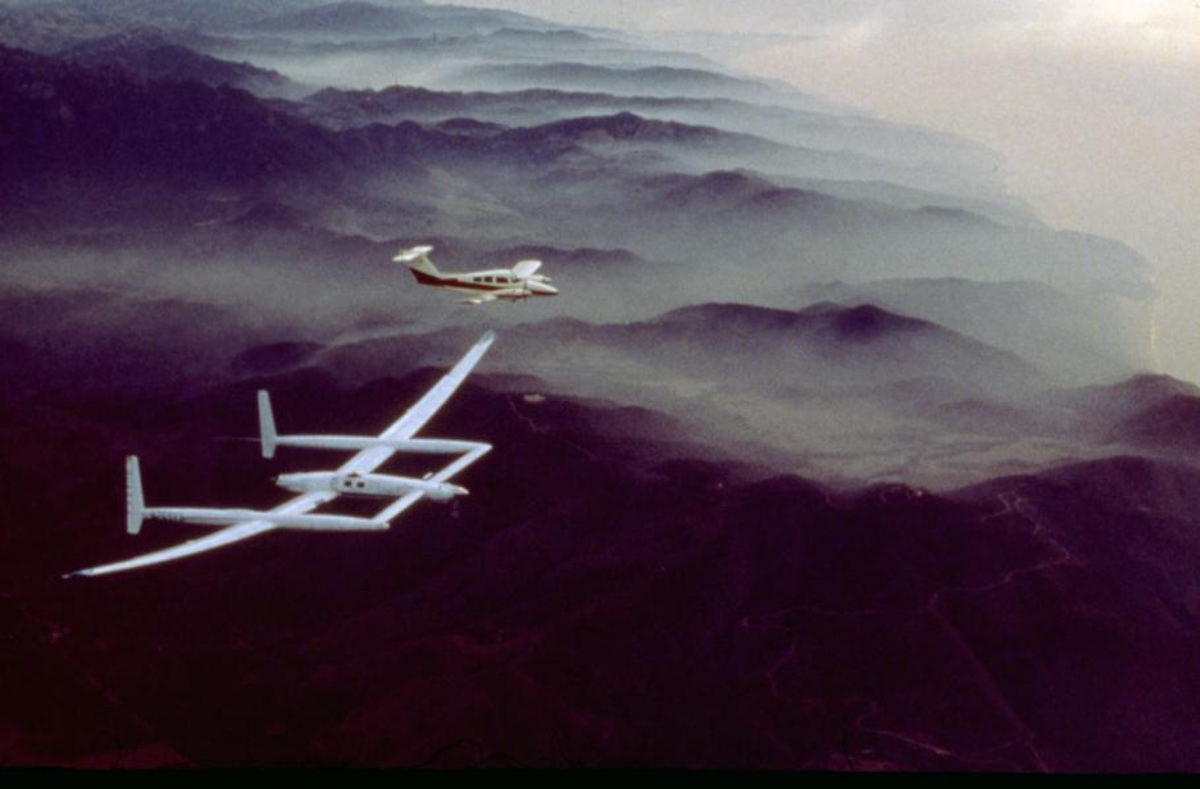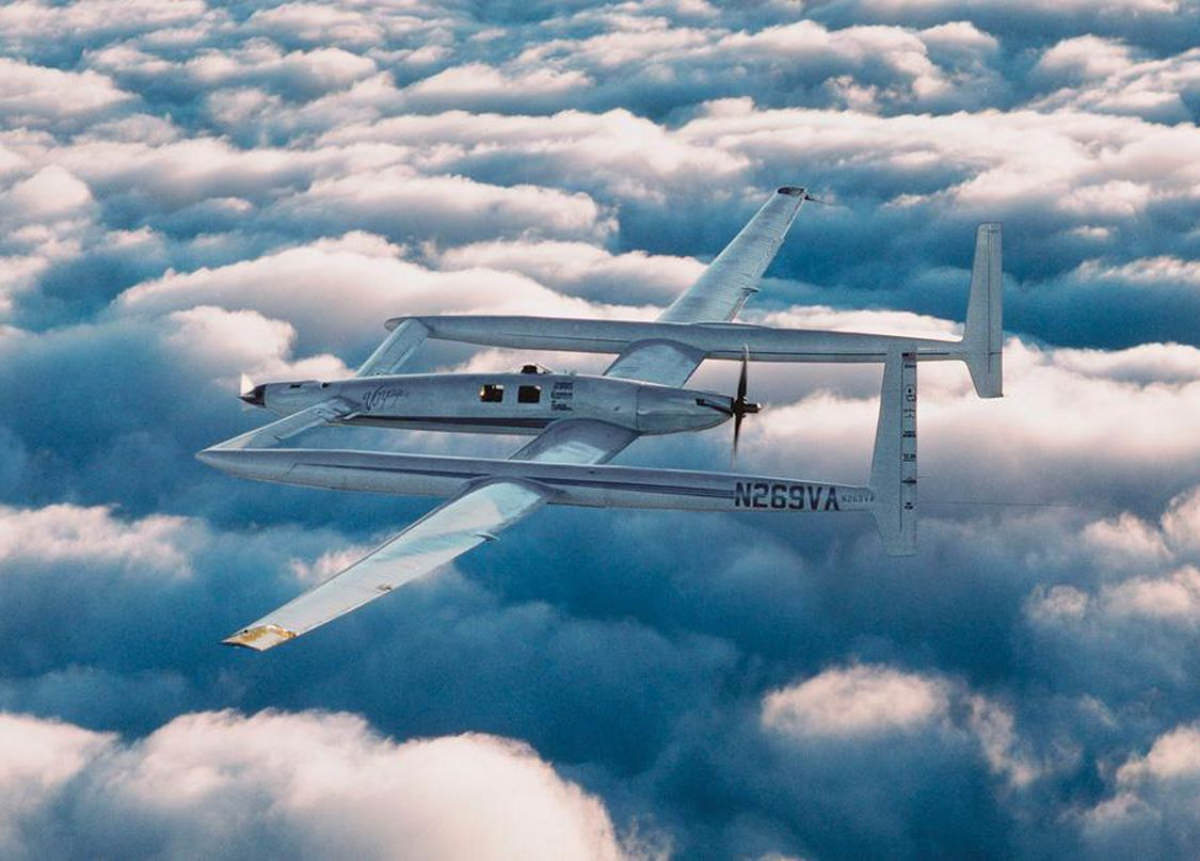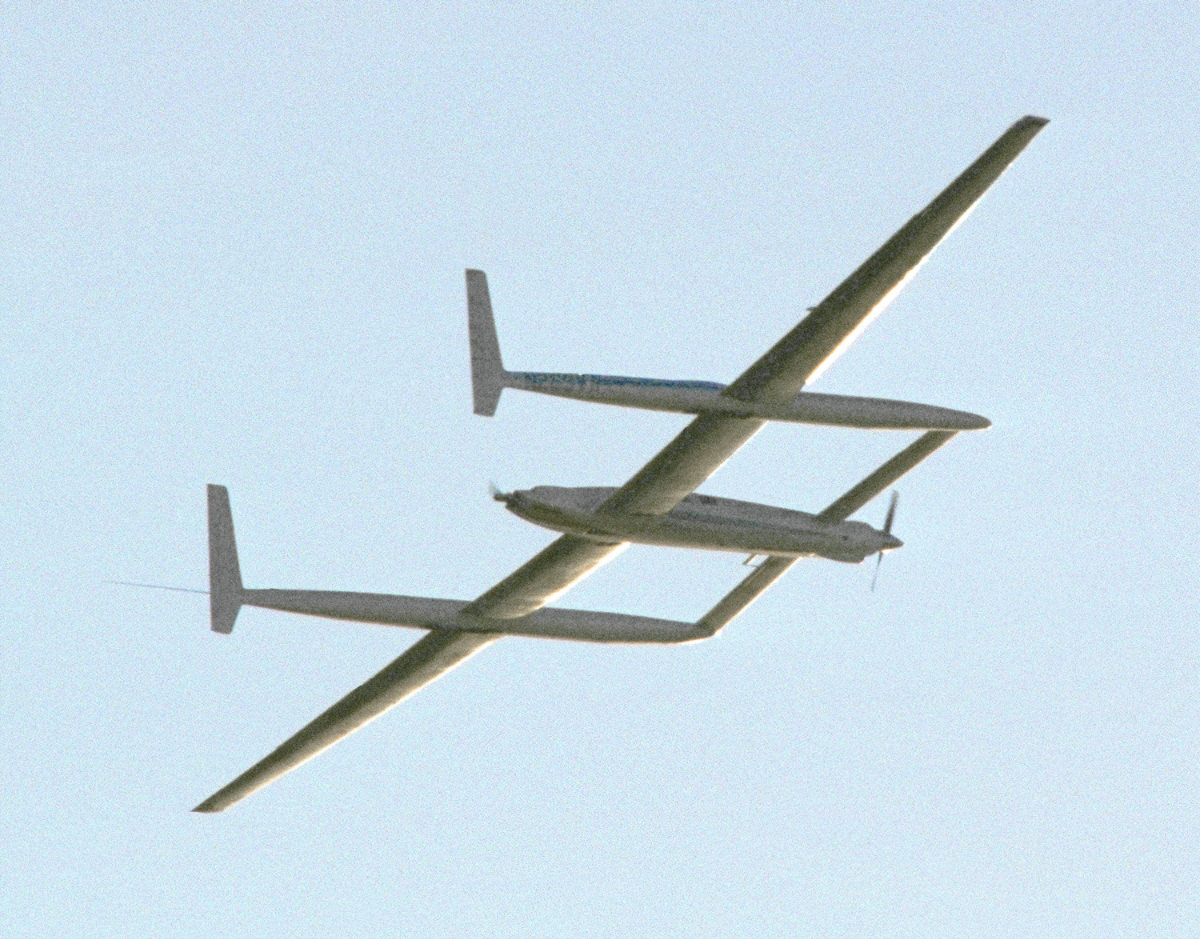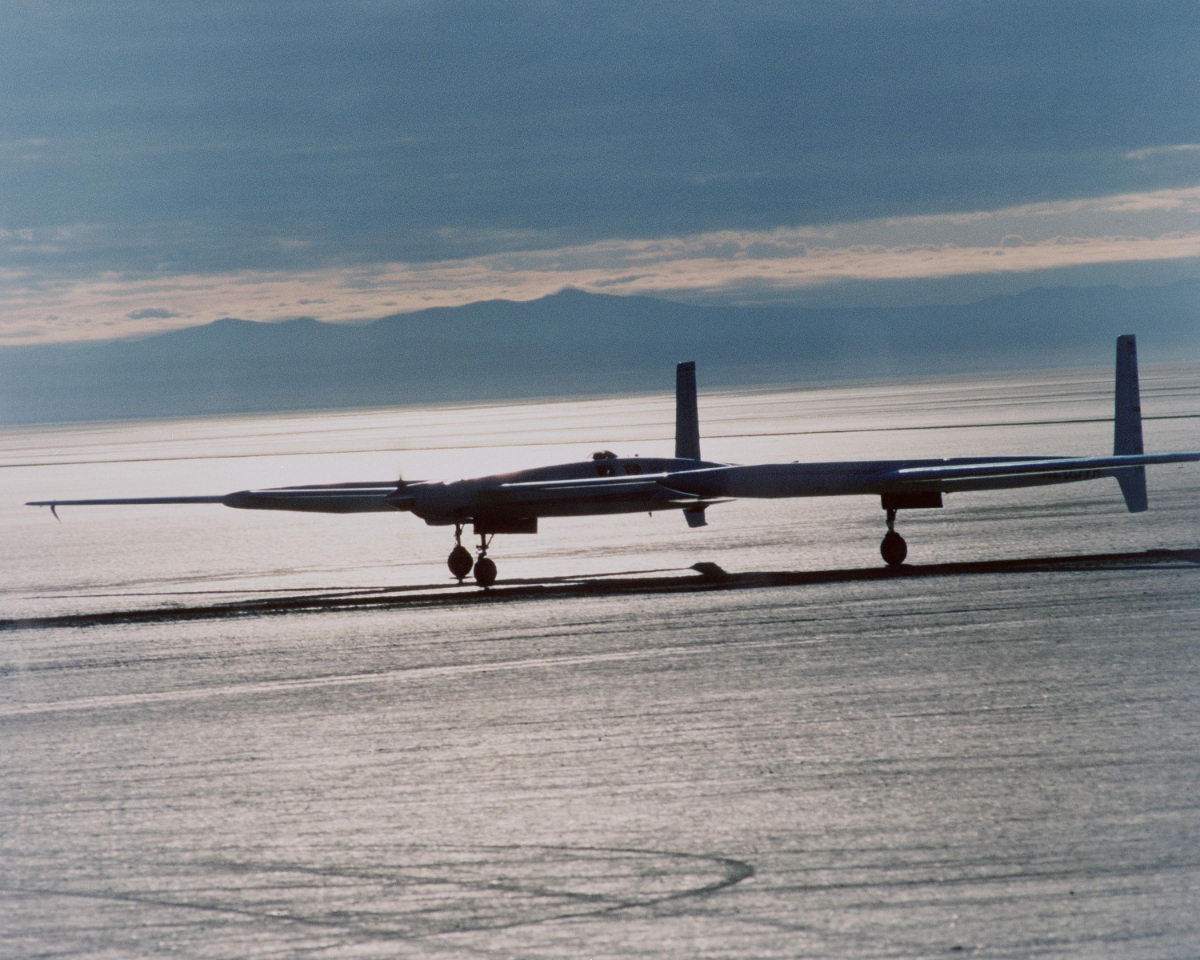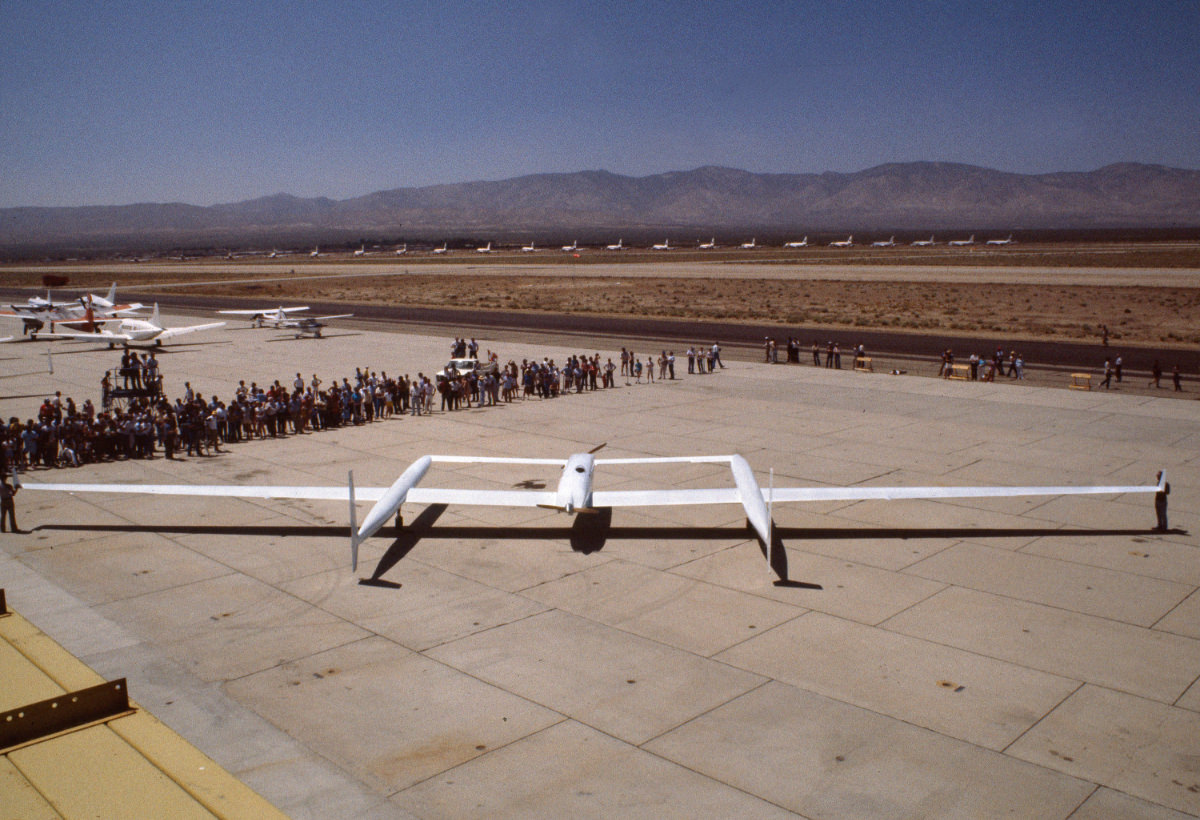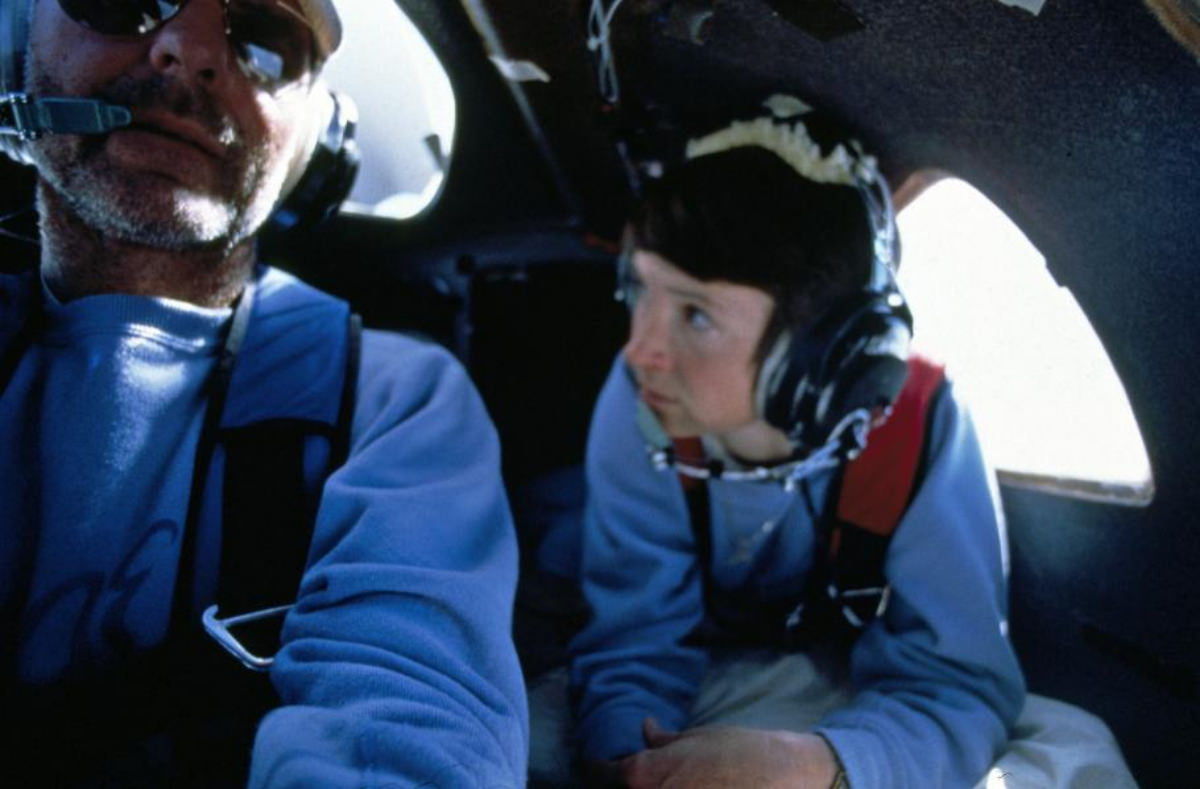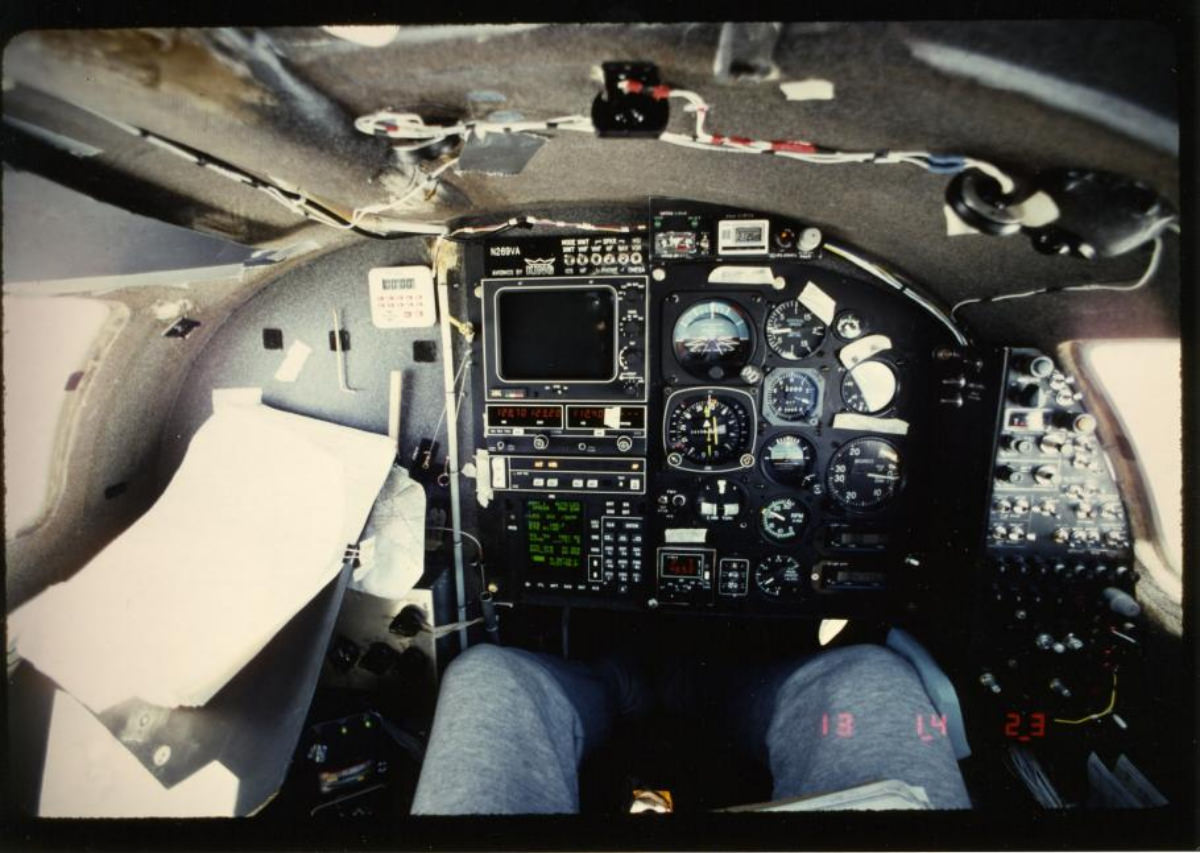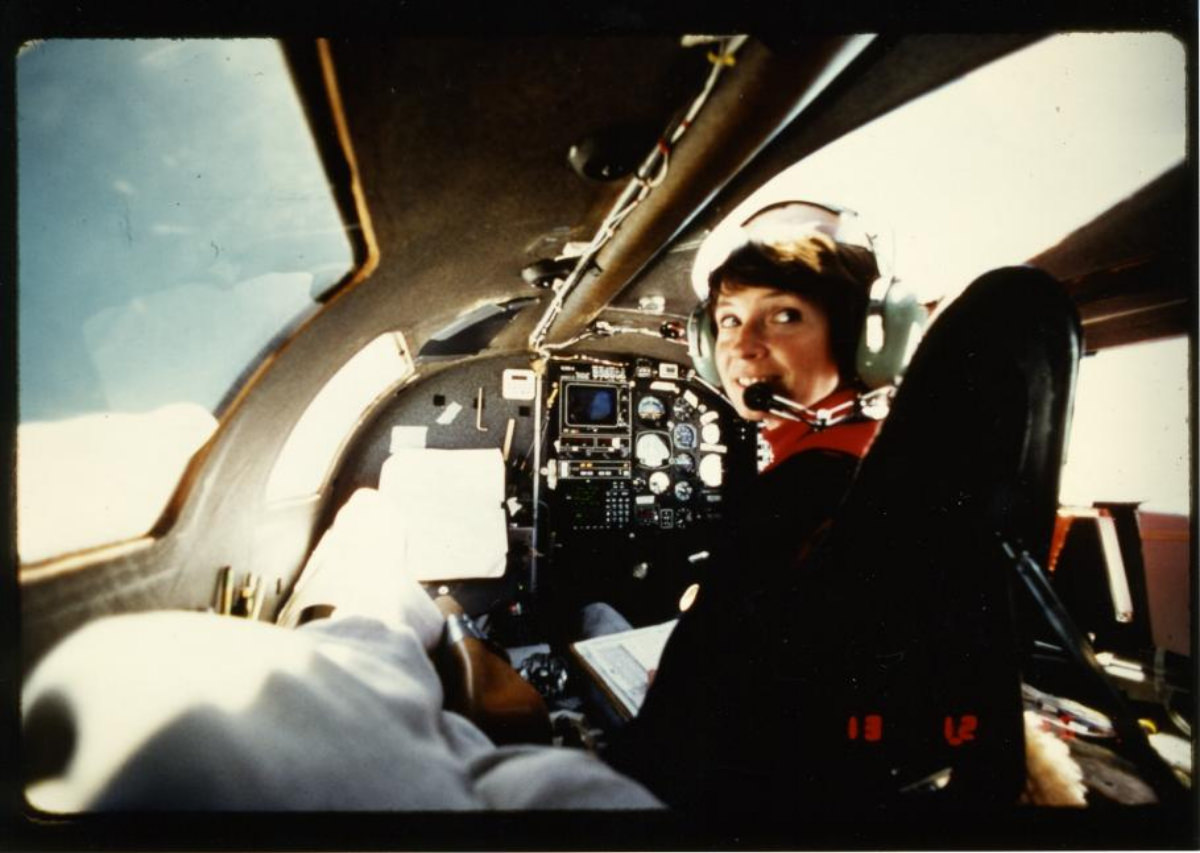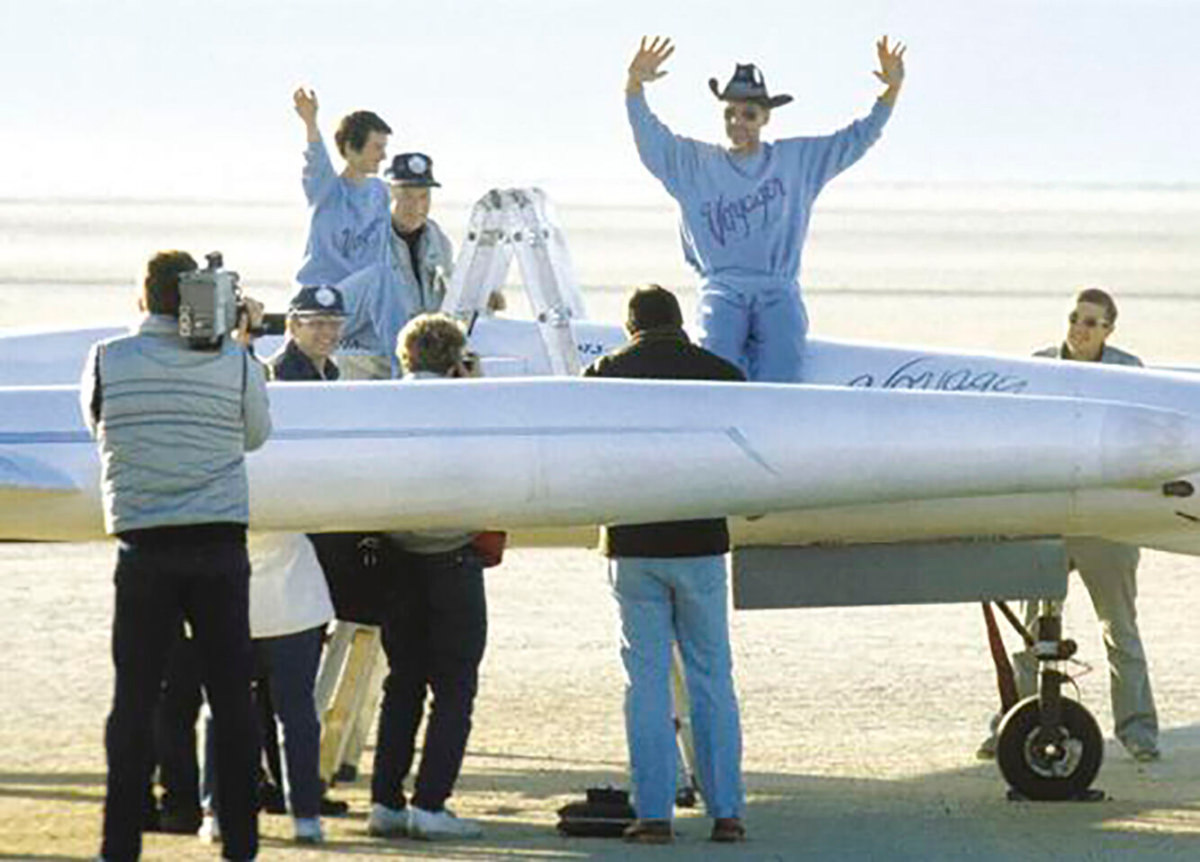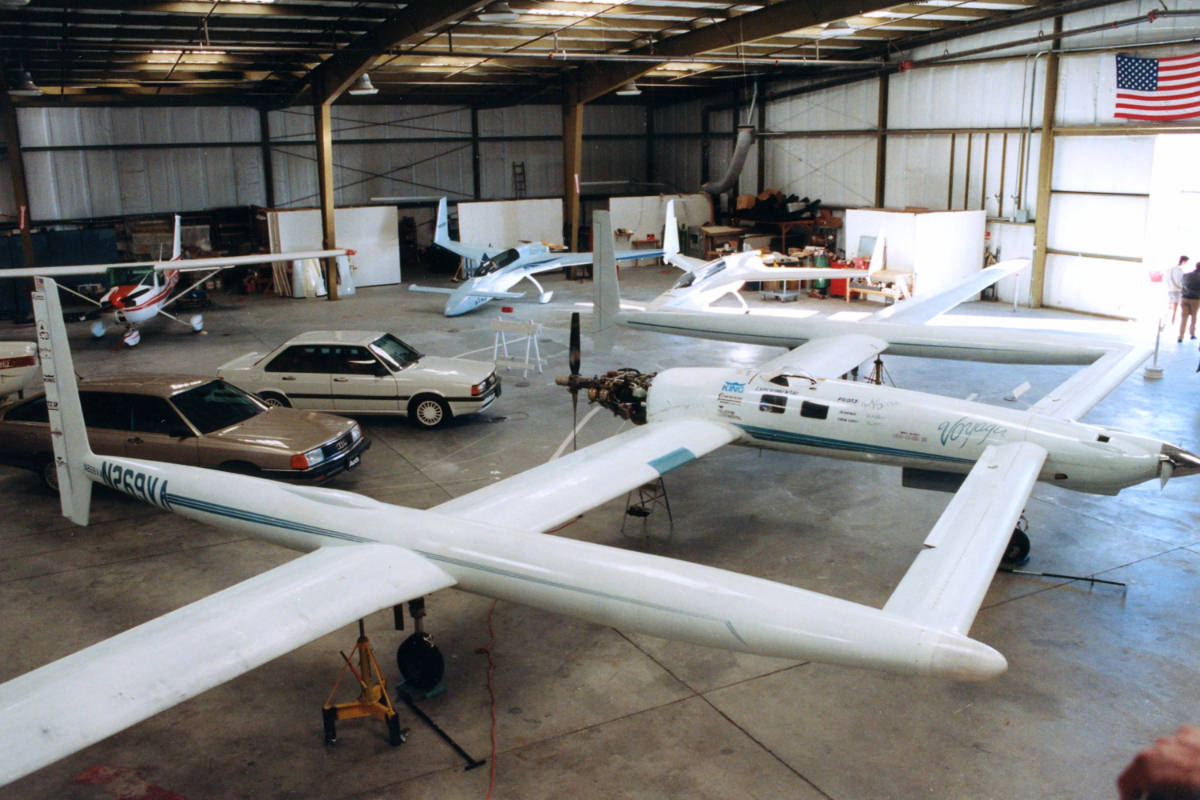Ever dreamt of circumnavigating the globe, breaking free from terrestrial bounds, and voyaging across the world’s vast oceans and continents without ever having to refuel? Well, in 1986, this dream turned into reality. The Rutan Model 76 Voyager, an aircraft unlike any other, took to the skies and made history by becoming the first aircraft to fly non-stop around the world without refueling.
A small airplane, powered by little more than determination, innovation, and a lot of aviation fuel, managed to set world records that are celebrated till today. Buckle up, as we unravel the fascinating tale of the Rutan Voyager.
Imagining the Impossible
The idea of the Voyager was conceived over lunch in 1981 by brothers Burt and Dick Rutan, along with the seasoned pilot Jeana Yeager. Burt, a visionary aerospace engineer, sketched his innovative idea on the back of a napkin, while his brother Dick, a former fighter pilot, and Yeager enthusiastically looked on.
The ensuing five years saw countless hours of dedicated work by a passionate group of volunteers at the Rutan Aircraft Factory and Voyager Aircraft. Their hard work, grit, and relentless pursuit of the impossible finally led to the birth of the Voyager, an aircraft that was as unique as its mission.
A Craft like No Other
The Voyager was a marvel of aerospace engineering, built almost entirely of lightweight materials like fiberglass, carbon fiber, and Kevlar. Despite its massive fuel storage capacity that allowed it to carry 7,011 pounds of fuel, the aircraft’s unladen weight was a mere 2,250 pounds. However, fully loaded before the historic flight, the aircraft weighed 9,694.5 pounds – over four times its original weight!
The Historic Flight
On December 14, 1986, the Voyager embarked on its historic flight from Edwards Air Force Base in California. The anticipation was palpable, with 3,500 members of the press present to witness the start of this record-breaking journey.
But it was not a smooth takeoff. As the plane accelerated, the tips of the wings, heavy with fuel, scraped against the runway causing the winglets at both ends to break off. Despite the rough start, Burt Rutan, observing from a chase plane, decided to continue the flight.
Trials, Tribulations, and Triumph
The next nine days were a test of endurance for Dick Rutan and Jeana Yeager. The small, cramped cockpit and challenging flight conditions took a toll on the pilots. At one point, Dick Rutan reportedly spent nearly three days straight at the controls. They navigated around severe weather conditions, including Typhoon Marge, and even dealt with a fuel pump failure near the end of the journey.
The Heroic Landing
Despite numerous challenges, on December 23, 1986, the Voyager safely landed at Edwards Air Force Base, 9 days, 3 minutes, and 44 seconds after taking off. It was an incredible moment, watched live by thousands of spectators at the airfield and millions more on TV around the world.
This historic journey made Dick Rutan, Jeana Yeager, and their team the proud recipients of the 1986 Collier Trophy. The dream that began over lunch, etched on the back of a napkin, was now a record-setting reality.
The Rutan Voyager’s flight is a shining example of human determination, innovation, and spirit. It stands as an enduring testament to what we can achieve when we dare to imagine the impossible. A similar feat was only repeated in 2006, by Steve Fossett in the Virgin Atlantic Global Flyer, interestingly, also designed by Burt Rutan.


